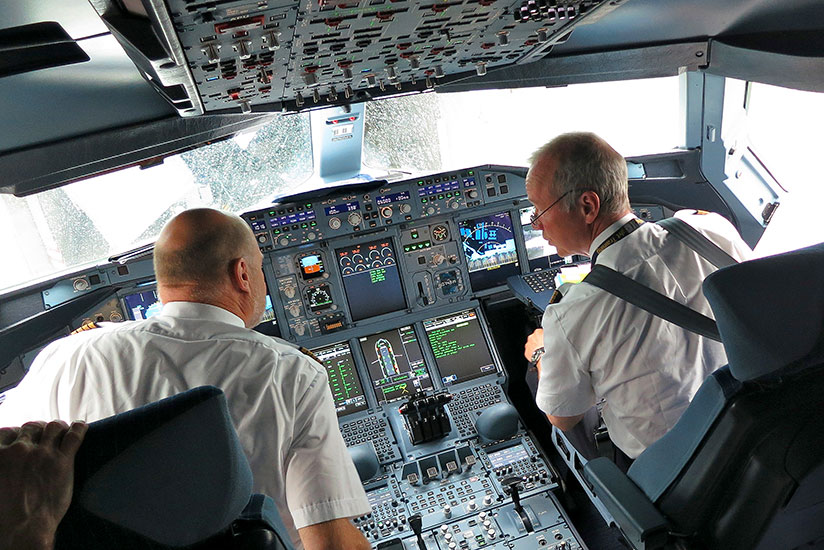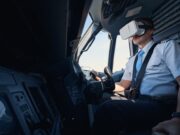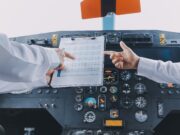
The long-term improvement in accident rates is a gratifying reflection of the work done daily by all of aviation’s professionals. Yet every year, we suffer fatal accidents with causes that predate pandemic concerns, generational demographics and recent headlines about management failures. Of course, none of these are root causes for loss of life, but pilot training is a root cause candidate.
In 2021, despite better airplanes, technologies and capabilities, 20 fatal airline accidents killed 176 people. In these 20 accidents, legally proficient and qualified crews operating flyable aircraft somehow found themselves in unsafe states. The valuable lessons learned from these events indicate that we can, and must, do better.
Despite evolutionary improvements that likely have prevented many accidents, including, for airlines, the advanced qualification program, upset prevention and recovery training and extended envelope training, today’s pilot training requirements often interfere with innovation and science that could eliminate many fatal airline accidents. How we got here is beyond our focus on how we can improve, but to understand our challenge, we need to understand our training history.
First, the core of today’s training programs is relatively unchanged from when the Wright Brothers taught people to fly. The ubiquitous model of “train a task — check a task” thinking survived and flourished, and decades later, that same thinking now produces exhaustive lists of training requirements.
Second, while many training tasks are completely valid, many more are not. Some have been added from a wide range of sources and are not always focused on the most important tasks to be trained. Much of this “training” is ineffective, accomplished in time-compressed box-checking exercises that are consumed by compliance, without consideration of operational context.
Third, and oddly, a fatal accident root cause may be the most crucial omission from these processes — the training and its results. Regulators create the requirements, training departments create the syllabi, and instructors teach, train and grade the tasks. The task list comprises a test, success is defined as task proficiency, and proficiency determines a “qualified” pilot. Put two qualified pilots together, and it’s called a “qualified crew.”
Proficient and Qualified — but Competent?
A game-changing new concept of competency for training and producing higher-performing and more resilient crews reaches far beyond outdated training philosophies of the past. In preliminary practice, significant improvements in pilot and crew performance are routinely accomplished in competency-based pilot training programs being deployed throughout many regions of the world’s airline aviation ecosystem. Competence-based training and assessment (CBTA) is already employed in maintenance and air traffic control.
For pilots, CBTA implemented by The Boeing Company advances a more comprehensive focus on operational safety margins, redefines a “qualified” pilot in terms of specific behaviors to achieve performance objectives, and requires a higher level of teamwork than simply each pilot performing a list of discrete tasks to a prescribed standard.
The U.S. Federal Aviation Administration and the European Union Aviation Safety Agency agree, and both recently approved Boeing’s CBTA 737 type rating and recurrent training programs after transforming traditional “train and check” syllabi. Similar initiatives are underway with other regulators and operators worldwide.
CBTA is not new. It evolved from the International Civil Aviation Organization’s (ICAO’s) evidenced-based training (EBT) development.1 Simply put, EBT uses data (evidence) to inform training and operational programs, policies and procedures. Examples of data include academic research, employee safety reporting, flight data monitoring/flight operational quality assurance, threat and error management (TEM), line operations safety audits (LOSA), human factors, crew resource management, and root cause analysis from safety investigations of incidents and accidents.
The Competencies
CBTA adopts and links the pilot, TEM and instructor frameworks, enabling flight instructors to coach and develop the concepts of countermeasures and monitoring to achieve operational safety.
CBTA is structured around ICAO’s Eight Competencies, with the International Air Transport Association (IATA) and the International Federation of Air Line Pilots’ Associations including knowledge as a ninth competency.2 The nine competencies are:
- Problem-solving and decision-making;
- Situational awareness;
- Workload management;
- Application of procedures;
- Flight path management — automation;
- Flight path management — manual;
- Communication;
- Leadership and teamwork; and,
- Application of knowledge.
These nine competencies are described by approximately 73 observable behaviors (OBs) that clearly and succinctly describe performance.
How might these be used? For recurrent training, instead of annual recurrent training plans, a three-year pilot training plan can emphasize three competencies and relevant OBs each year. A five-year recurrent plan can include more holistic follow-on training and better support for operational risk management.
For initial training, the entire CBTA philosophy is introduced with emphasis on a new first officer’s most-needed competencies — perhaps leadership and teamwork, communication, flight path management and application of procedures.
Specific OBs are designed into training events, and crews are observed and trained to improve behaviors that elevate pilot and crew performance. A company’s recent data evidence informs these designs.
Remediation is more effective because instructors have five to 10 specific OBs describing each competency from which to identify precisely why the overall competency is in jeopardy.
Targeted training can be designed, delivered and demonstrated, improving the OB and its associated competency.
CBTA’s pilot competency framework, monitoring, TEM, event management and resiliency strategies can be delivered to the pilot group quarterly or semiannually through safety promotion of refresher material. Line checks can observe the employment of competencies and OBs in line operations; LOSAs can add competency and OB observation objectives; operational policies can incorporate CBTA lessons learned; and procedures can be improved considering competencies and OBs.
Regulators, management and their pilot labor representatives are necessary and compelling colleagues in the design and tailoring of CBTA to a particular organization.
Who Benefits?
CBTA can improve pilot and crew performance, operational risk management, safety metrics and key performance indicators, and strengthen the safety management system (SMS).
On the flight deck, CBTA addresses a fundamental Achilles heel in aviation — ambiguity — specifically combating a lack of crew clarity between intent and action that continues to be reflected in accident causal factors. CBTA emphasizes monitoring and briefings, creating a shared mental model that facilitates continuous comparative analysis, error-detection, improved decision-making and safety assurance.
An excerpt from IATA’s white paper, “Competency-Based Training and Assessment (CBTA) Expansion Within the Aviation System,” summarizes CBTA’s importance:
“Traditional training, which is hours-driven and task-based, focuses on training mainly three technical elements: handling skills, automation management and application of procedures. The content of the traditional skill test or proficiency check is based on exercises where the measurement of pilot performance is mainly based on a set of fixed, predetermined criteria represented by numeric flight path deviation tolerances.
“In contrast, CBTA aims at assessing, developing and enhancing the pilot competencies … and the instructor/evaluator competencies. … CBTA also uses more scenario-based training for more realism and facilitation techniques by the instructor to support the pilot’s development; this enhances the pilots’ competence and increases their confidence. Under a CBTA program, the pilots are more resilient when managing unexpected situations in everyday operations.”
CBTA integrates a systems approach with decades of research and development in human factors, pilot and crew behaviors, and flight operations in highly technical environments. It embraces TEM, monitoring, event management, human factors, and crew performance assessments, directly supporting the SMS components of safety risk management, safety assurance, and safety promotion.
CBTA targets shortcomings that historically have been cited as accident root causes and causal factors through specific training in competencies and OBs that, had they been known and utilized, may have helped facilitate more successful outcomes.
Concurrent with company commitments to CBTA pilot training, regulators should address the ubiquitous list of tasks presently required to be trained and checked, and restructure training requirements to accommodate CBTA-based training methodologies.
Finally, we must overcome history’s recipe of continually adding accident-cause factors to ever-expanding lists of training tasks, while ignoring context, the crew’s environment and crew performance in executing those tasks. In many dynamic flight deck environments, the flawless demonstration of task proficiency is not as important as a competence-based execution of crew performance.
Pilots will always need a level of task proficiency, but future flight safety will depend on how well crews work together, maintain situational awareness and control the aircraft, manage events, and assure safe outcomes. Two magnificently proficient pilots on a flight deck who cannot communicate, work together effectively, lead or follow, are another accident waiting to happen. CBTA is a high-return-on-investment corrective action that could help eliminate fatal accidents.
Image: © Steve Jurvetson | Wikimedia CC-BY 2.0
Chris Nutter is a staff instructor at the University of Southern California Aviation Safety and Security Program, a consulting original equipment manufacturer (OEM) flight training subject matter expert and a recently retired captain and check airman for a major airline. Ramesh Rethinasamy is a consulting OEM flight training subject matter expert and a retired flight operations manager of an international airline.
Notes
- ICAO. DOC 9995, “Manual of Evidence-Based Training,” First Edition. 2013.
- IATA. “Evidence-Based Training Implementation Guide,” First Edition, 2013. Related information about CBTA is contained in two additional IATA reports: “2021 Safety Report” and “Competency Assessment and Evaluation for Pilots, Instructors and Evaluators”

